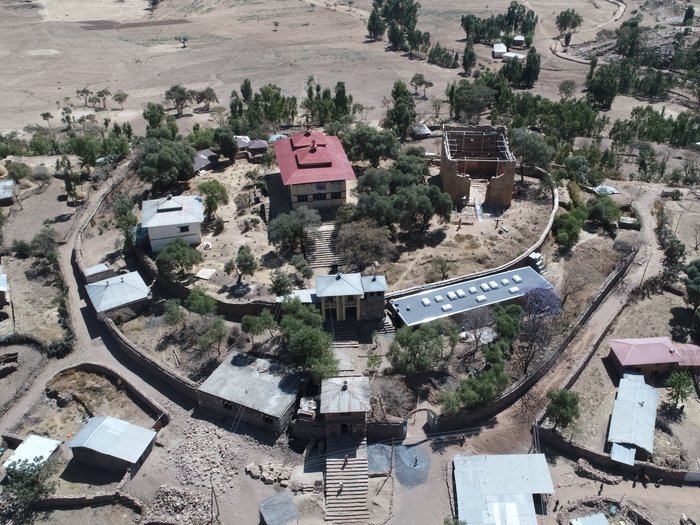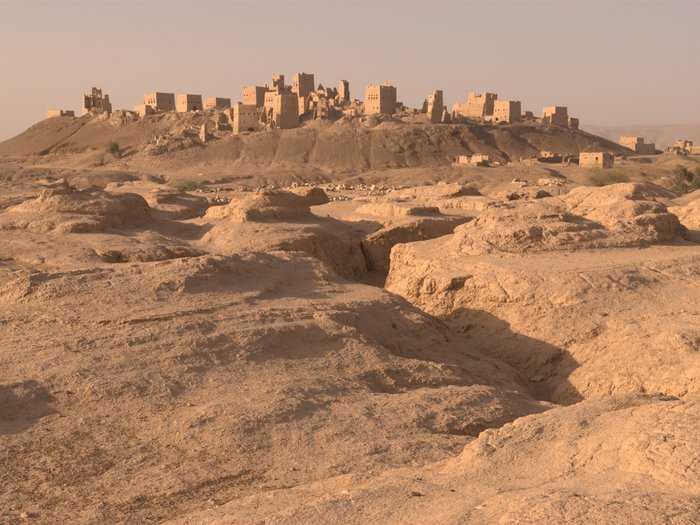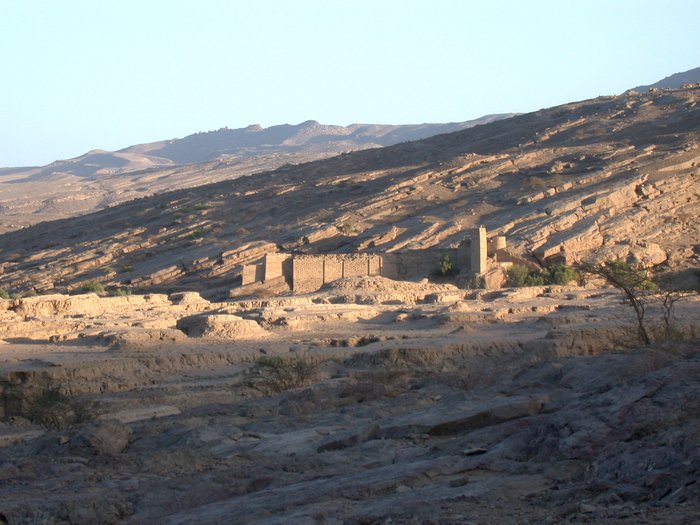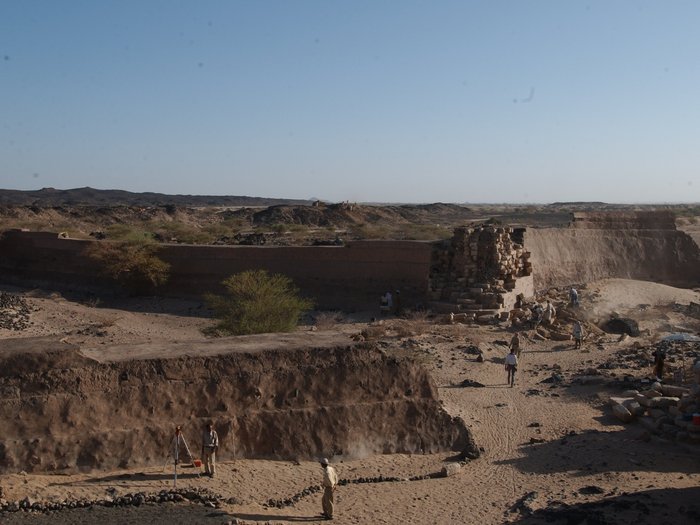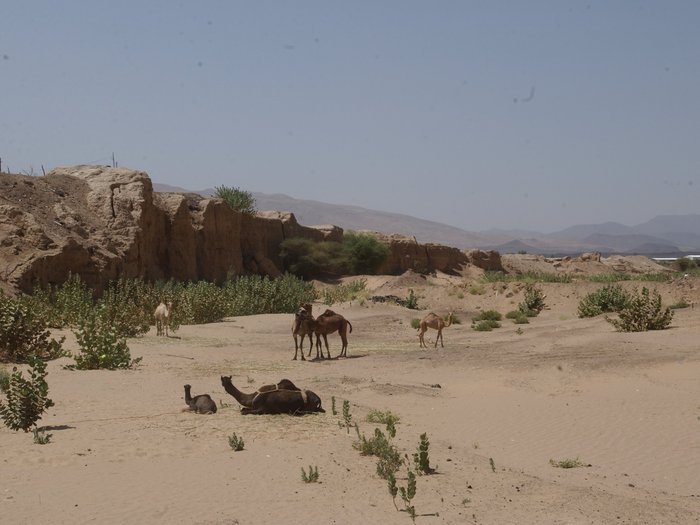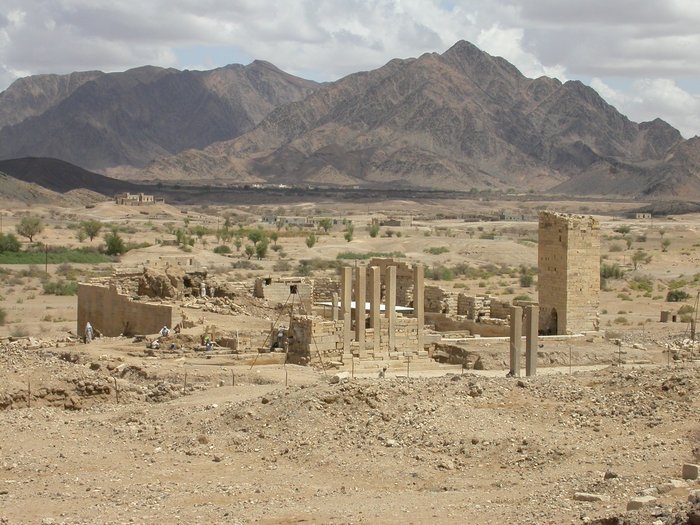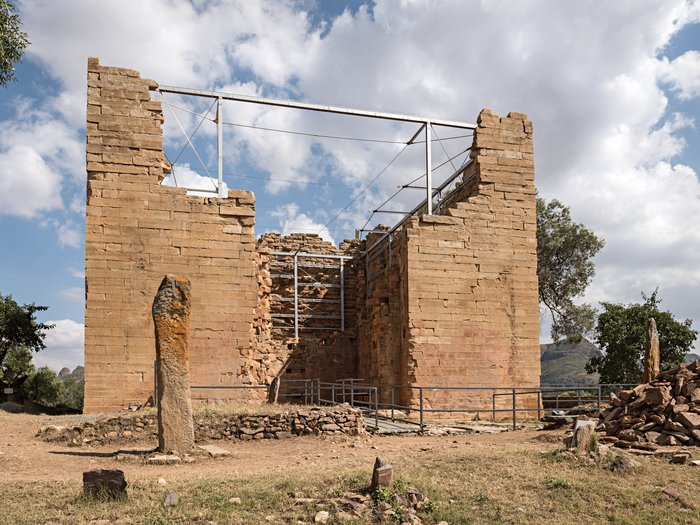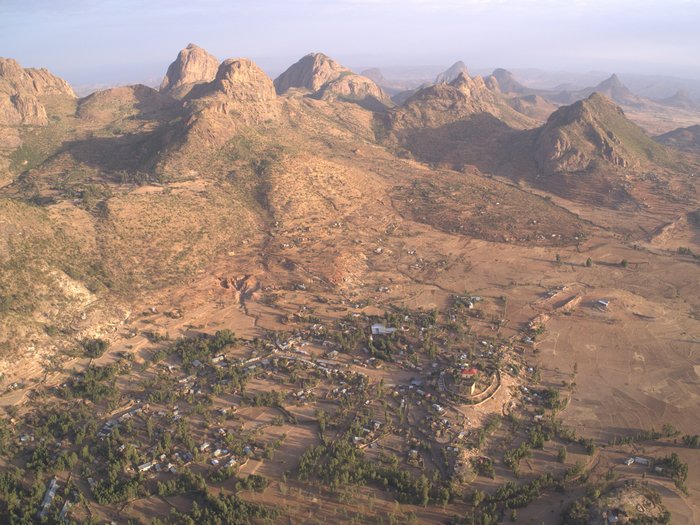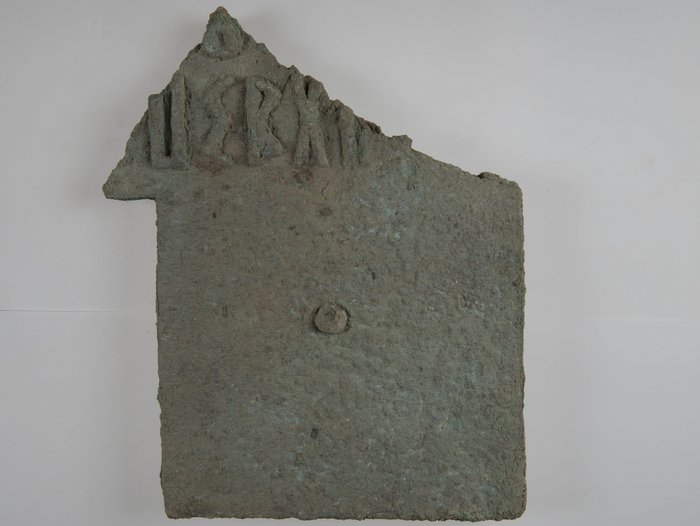
Blühende Weihrauchbäume im Hochland des Tigray (Äthiopien). © DAI, Außenstelle Sanaa // Iris Gerlach
Topics & Outlook
Brief Overview
The study area of the Sana'a branch office reaches from South Arabia to the northern part of the Horn of Africa within a time frame chiefly ranging between the 3rd millennium BC and the beginnings of Islam.
It examines fundamental topics relating to the emergence of complex societies and their precursor cultures, to sacred buildings and landscapes, as well as to the interaction processes between neighbouring and geographically distant regions. This also includes aspects pertaining to the mobility of people, ideas, and objects, as well as on the therewith connected exchange and trade networks. Another emphasis is dedicated to the reconstruction of the palaeo-environment and the strategies humans developed to adapt, whilst also coping with the respective political, economic, and climatic surroundings. Social and technological innovations within water management in arid regions, changing social structures, and the development and use of resources are the parameters of this relationship between man and his environment.
Environmental Adaptation And Settlement-Related Manifestations
Issues affecting human adaptation to the environment and the ensuing environmental changes it has prompted itself are more topical than ever. The projects by the Sana'a branch office investigates how early societies dealt with climate change (Groundcheck) or with acute crises such as wars or natural disasters.
With this regard, research currently concentrates on the South Arabian cultural landscape of Saba (Yemen). Despite the adverse climatic conditions along the margins of the ar-Rub 'al-Khali Desert, a complex society managed to evolve in the oases of Marib and Sirwah towards the end of the 2nd millennium BC, whose economies were based on intensive agriculture and a highly developed irrigation system. At the latest by the 8th century BC, Saba in South Arabia gained control over one of the most famed ancient trade routes known as the Incense Route. Today, the latter needs to be viewed as synonymous with an entire network of communications whose itineraries, rather than being static, were subject to persistent change whilst depending on the altering political constellations and economic power centres.
The data obtained from the research in the heartland of Saba are intended to contribute to the clarification of inquiries concerning the interrelationships between the natural environment and human land use in the Sabaean settlement areas. This indeed, revealed changes in settlement patterns occurring until the 6th century AD as a direct reaction to climate-related as well as politically and economically induced developments in the region. The aim of the project is to investigate the correlation between technological innovations, climate change, and political and economic fluctuations.
Use Of Resources
Effective access and use of resources is not only essential today, but has also been critical for the sustainable development of societies in the past. In their approach the projects elaborated by the branch office at Sana'a examine the accessibility and distribution of resources in relation to potential conflicts arising from scarcity and shortage.
An example for the use of resources are the monumental building programmes in the heartland of Saba and areas under Sabaean influence in Northern Ethiopia. By aid of applications in architectural research, civil engineering, and the geosciences, the therefore necessary resources as well as distribution and accessibility are assessed at Yeha, Melazo/Hawelti (Ethiopia) and Sirwah (Yemen). A particular aspect in this matter is the extent to which the high consumption of timber impacted the natural environment and to which degree different construction methods depended on the respective environmental and cultural prerogatives.
Mobility And Culture Transfer
Next to ensuring for survival, the driving forces behind mobility, and subsequently cultural transfer between now and again far-flung communities, were above all the expansion and control of economic activities, the maximisation of material gain combined with that of political power. Cultural landscapes could be networked not only through systems of mobility based on barter and trade, but also migration.
The Sana'a branch office's project in Tigray's Rama Basin (Ethiopia) studies forms of mobility and interaction routes in highland cultures of the northern region of the Horn of Africa to the Middle Nile Valley, the Gash Delta, and parts of Egypt between the 2nd and early 1st millennium BC. It thereby becomes necessary to clarify the extent to which inner-African mobility of people and exchange of ideas and objects contributed to the development of the Ethiopian highland cultures and inversely, to determine the highlands' impact on the Nile Valley and the Gash Delta. One of the project's objectives is to reconstruct former settlement patterns and connecting routes.
Another form of mobility is examined at the sites of Yeha and Melazo/Hawelti (Ethiopia). Here, the questions centre around interaction processes between immigrated Sabaeans from the Marib area (Yemen) with the local population in the early 1st millennium BC. The project analyses by aid of both archaeological and epigraphic evidence the emergence and change of this cultural sphere and reveals its traditions reaching into the post-Christian period.
The projects conducted by the Sana'a branch office in both Yemen and the Ethiopian highlands furthermore deal with the meantime close contacts that connected these regions with the Hellenistic-Roman and later Byzantine worlds after the 1st century BC. The most striking example in this respect is the site at Jabal al-Awd at 3,000 m a.s.l in Yemen's central highlands. Among other objects, the numerously excavated bronzes whether in form of Mediterranean imports or local products fashioned according to Hellenistic-Roman tastes, testify to extensive cultural contacts.

